This easy recipe makes the best gravy using broth or pan drippings and a few other simple ingredients. Butter and flour combine for a simple roux before whisking in the broth and seasonings. Don’t have broth on hand? Make this recipe in minutes with just bouillon and water instead!
Roasted turkey, chicken, potatoes, and vegetables can all be topped with this creamy gravy. It seriously makes any dish better! Personalize the flavor of this easy gravy recipe with your preferred broth, onion powder, herbs, and other flavorings for a rich, creamy sauce. Enjoy gravy with other Thanksgiving side recipes like my creamy mashed potatoes, classic green bean casserole, and homemade stuffing.
What You Need To Make This Recipe
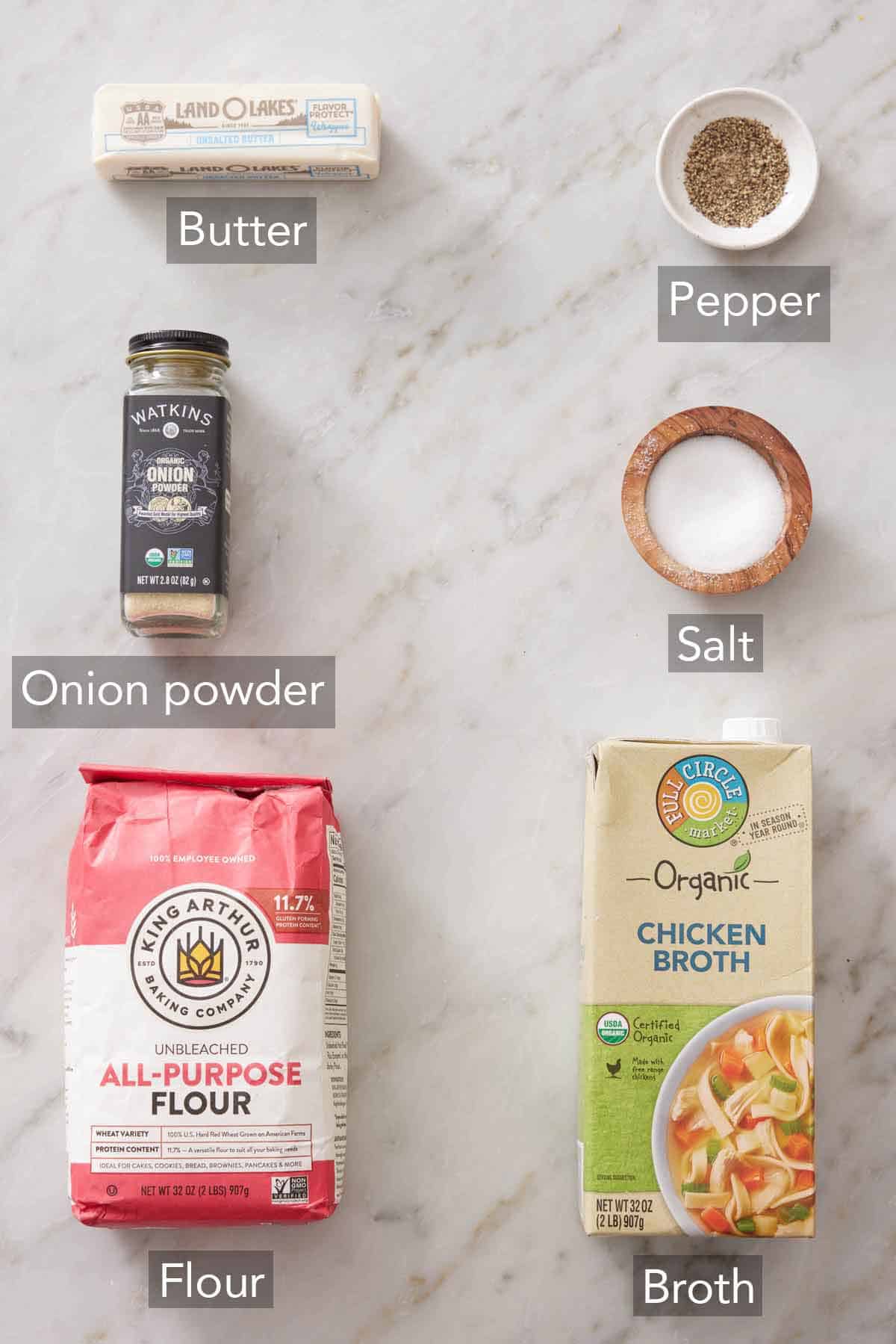
Roux — this is the term for cooking unsalted butter and all-purpose flour to make a paste, which thickens the homemade gravy.
Broth — you need 3 cups of flavorful liquid, either warm broth, stock, or pan drippings from roasted meat.
Seasonings — onion powder, salt, and black pepper are all you need for a deliciously simple gravy.
How To Make Homemade Gravy
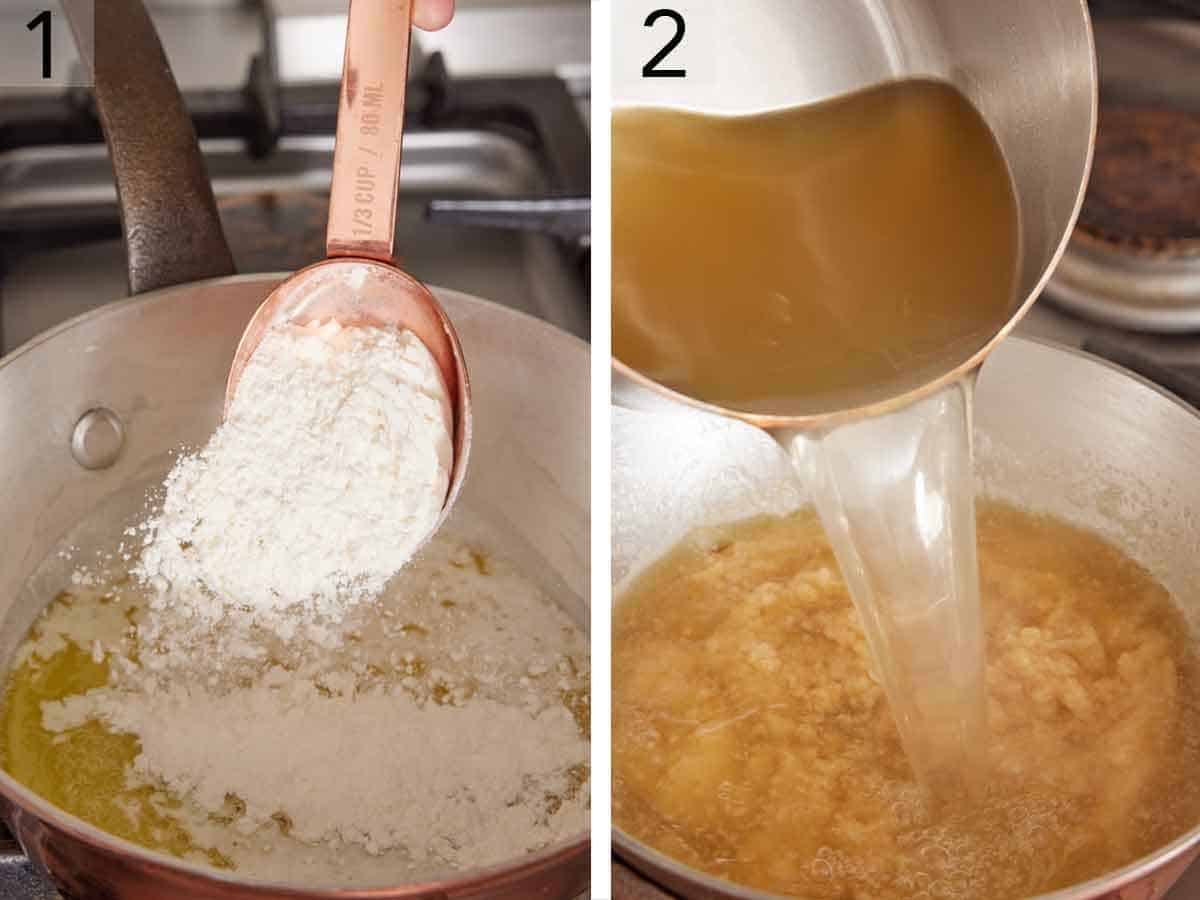
1. Melt the butter in a medium saucepan over medium heat. Whisk in the flour and cook, stirring constantly, until the flour turns golden brown.
2. While whisking, slowly pour in the broth or pan drippings and whisk the mixture until smooth.
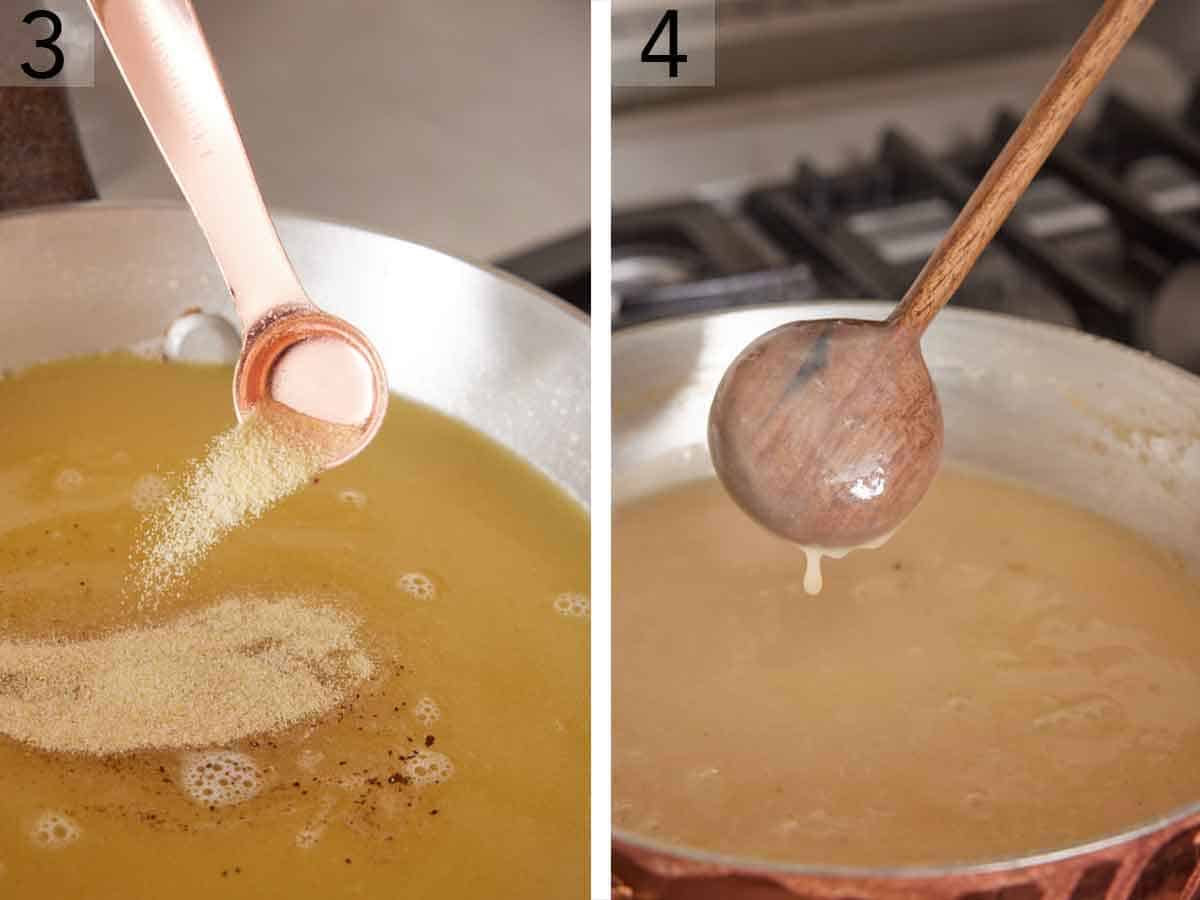
3. Add the onion powder and reduce the heat to medium-low.
4. Simmer, stirring frequently, until the turkey gravy thickens enough to coat the back of a spoon. Add salt and black pepper to taste. Serve immediately.
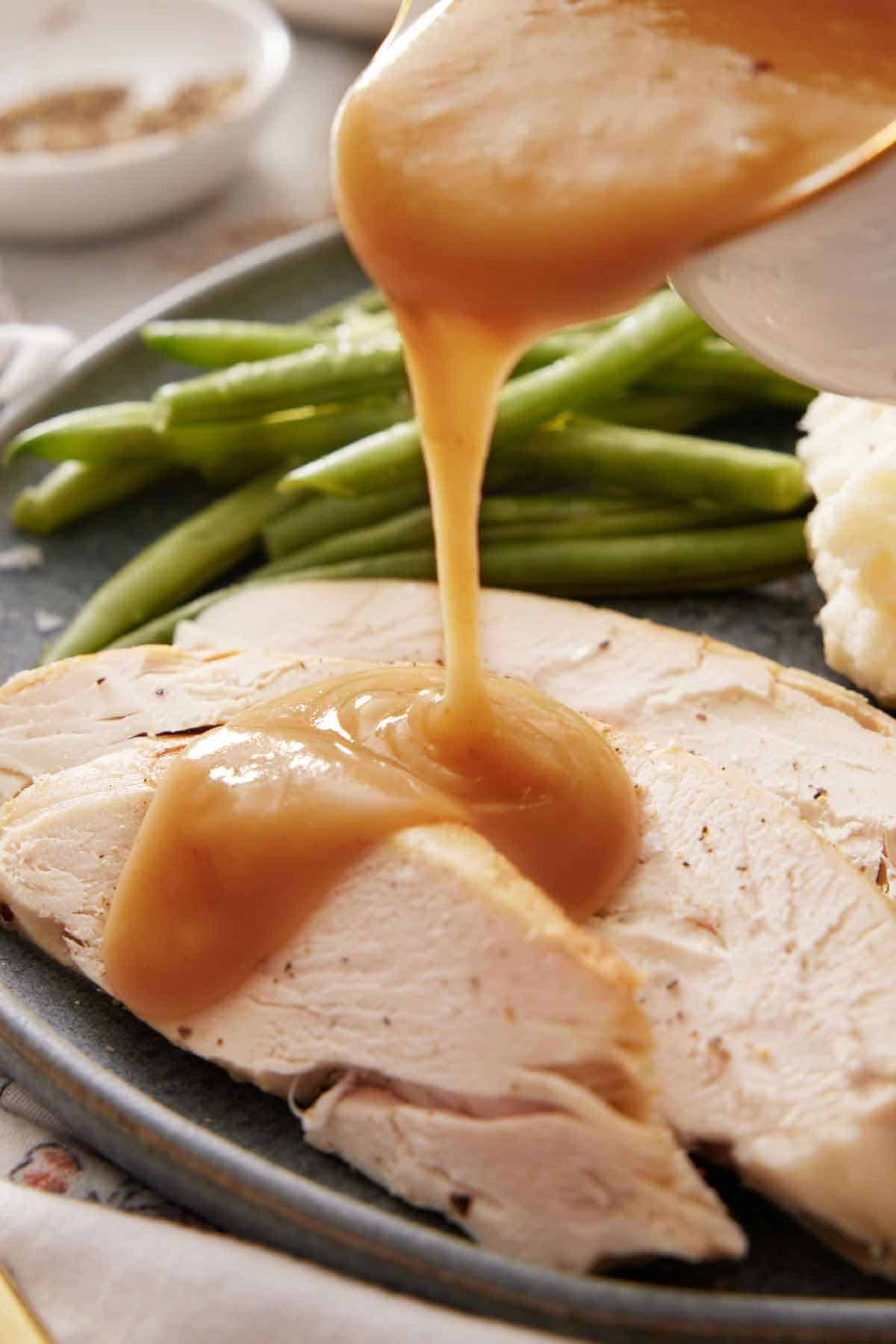
How To Use Drippings
You can use pan drippings from several different types of roasted meats, such as roasted chicken, beef, pork, or a Thanksgiving roasted turkey. These drippings will add the most flavor to your gravy. Since gravy cooks up quickly, you can make it while the meat rests before carving.
Carefully pour off the drippings from the roasting pan and measure them in a large liquid measuring cup or fat separator. Remove most of the liquid fat, then check the volume of drippings that you have. If needed, add more broth, stock, or water so you have a total of 3 cups of liquid.
The Importance Of A Roux
A roux is the hallmark of a good gravy. I can’t stress its importance for perfectly velvety gravy! A roux is made of fat (I’m using butter) and flour and is used to thicken homemade gravies and sauces. You’ll cook the mixture long enough to toast the flour so that the gravy does not taste raw or powdery.
Toasting the roux also adds complexity to the gravy. If you like darker gravy, you can continue cooking the roux until it turns golden or dark brown. Keep in mind that the longer you cook a roux, the less thickening power it will have, so a dark roux-based gravy will be thinner in consistency.
How To Get The Right Consistency
The consistency of gravy is very easy to adjust! If the gravy is thicker than you’d like, thin it out by adding more broth or drippings. If it’s too thin, you can keep simmering it until it thickens to your preference or add a cornstarch slurry to thicken it up faster.
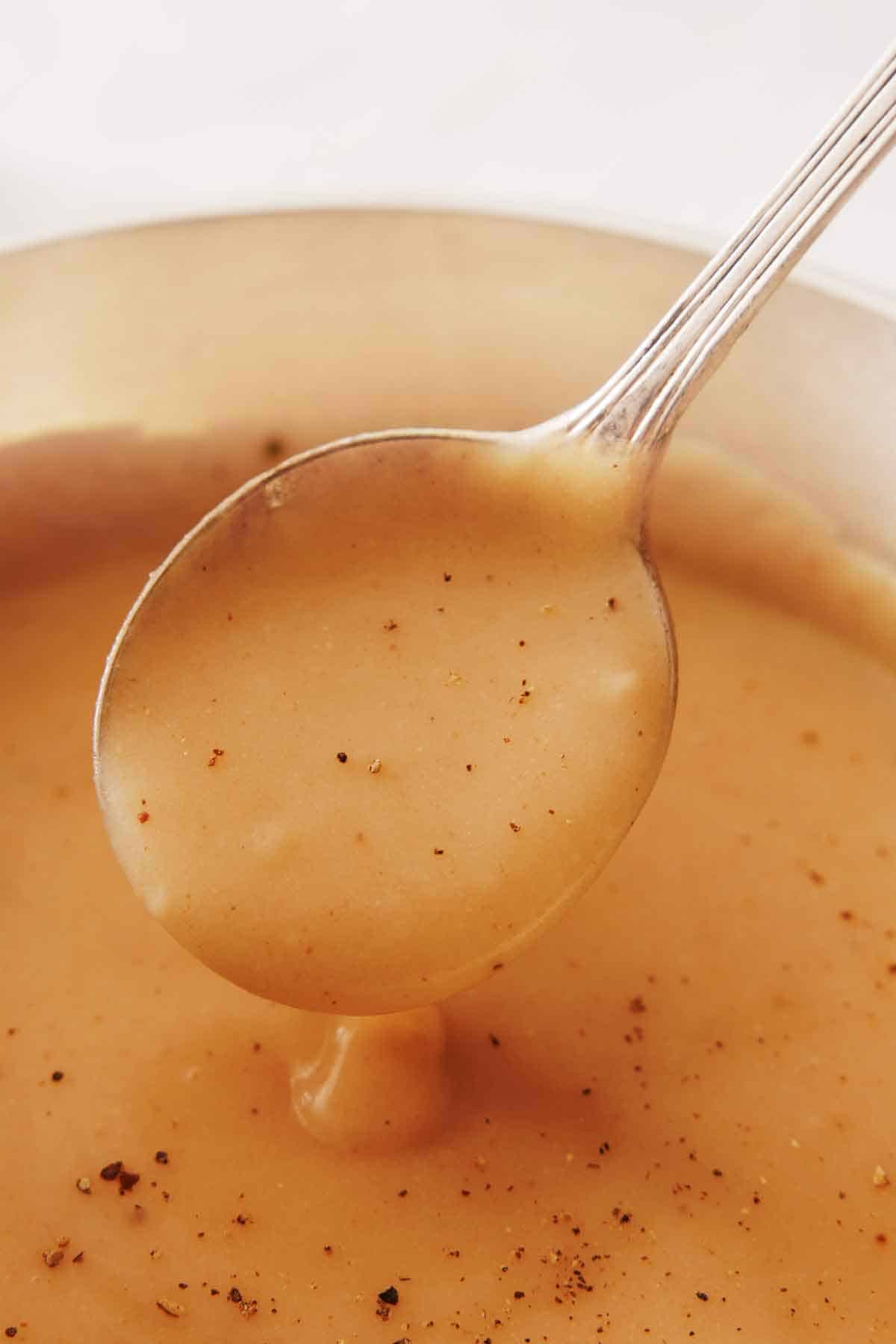
Adjust The Recipe Based On Your Servings
There is a basic formula for gravy that makes it easy to scale up or down! For every 1½ cups of liquid, use ¼ cup of flour and 3 tablespoons of butter for the roux.
I like to account for about ⅓ cup of gravy per serving or guest. This recipe yields about 2 cups of homemade gravy, which will be enough for 6 servings. Scale the recipe up or down to suit your needs.
Variations
- Use any kind of broth or stock: You can use flavor to match the gravy to the protein or meal you are serving. Chicken stock, chicken broth, beef broth, or seafood stock will all work. Use homemade turkey stock for Thanksgiving or holiday meals!
- For a vegetarian gravy, use vegetable broth, stock, or bouillon.
- If you don’t have broth or stock, use bouillon cubes with hot water. Use 1 bouillon cube per 1 cup of water or as directed on the package.
- Seasoning ideas: You can add extra flavor with dried or fresh herbs like thyme, sage, rosemary, or poultry seasoning. I use 1 tablespoon of minced fresh herbs or 2 teaspoons of dried herbs for this recipe.
- Add umami: A splash of Worcestershire sauce adds depth of flavor. A little goes a long way, as the sauce can overpower the other flavors.
Ways To Serve
Creamy gravy is a welcome addition to any holiday table, as the rich, savory flavor pairs well with roasted meat and a variety of sides. Enjoy it poured over Thanksgiving turkey, mashed potatoes, cornbread dressing, and stuffing.
But don’t feel like you have to save this recipe for the holidays. Homemade gravy is delicious on chicken fried steak, air fryer pork chops, roasted chicken, air fryer turkey breast, roasted lamb, or roast beef. Because this recipe works with any type of broth or pan drippings, you can personalize it for your meal.
This is also the perfect gravy to drizzle over roasted asparagus, air fryer Brussels sprouts, roasted carrots, or other vegetables.
Pro Tips For Making This Recipe
- Strain the gravy for a silky smooth texture: I like to strain my gravy after it has thickened to catch any potential lumps of flour that didn’t incorporate or little pieces of herb or meat from the drippings. This is totally optional, though!
- For a white gravy, substitute whole milk for the broth. Perfect for serving with my buttermilk biscuits recipe and even more delicious with the addition of browned ground sausage for the perfect biscuits and gravy.
- Add salt and pepper at the end. Finish the gravy with salt and black pepper to taste and additional onion powder if desired. Especially when using pan drippings, it is important to taste it before adding salt or pepper because the flavor of the drippings will vary depending on the seasonings used on the meat.
- Use other fats for the roux. Unsalted butter is an easy way to make a roux for gravy, but you can certainly use other fats like the fat skimmed off of the drippings, duck fat, or dairy-free butter.
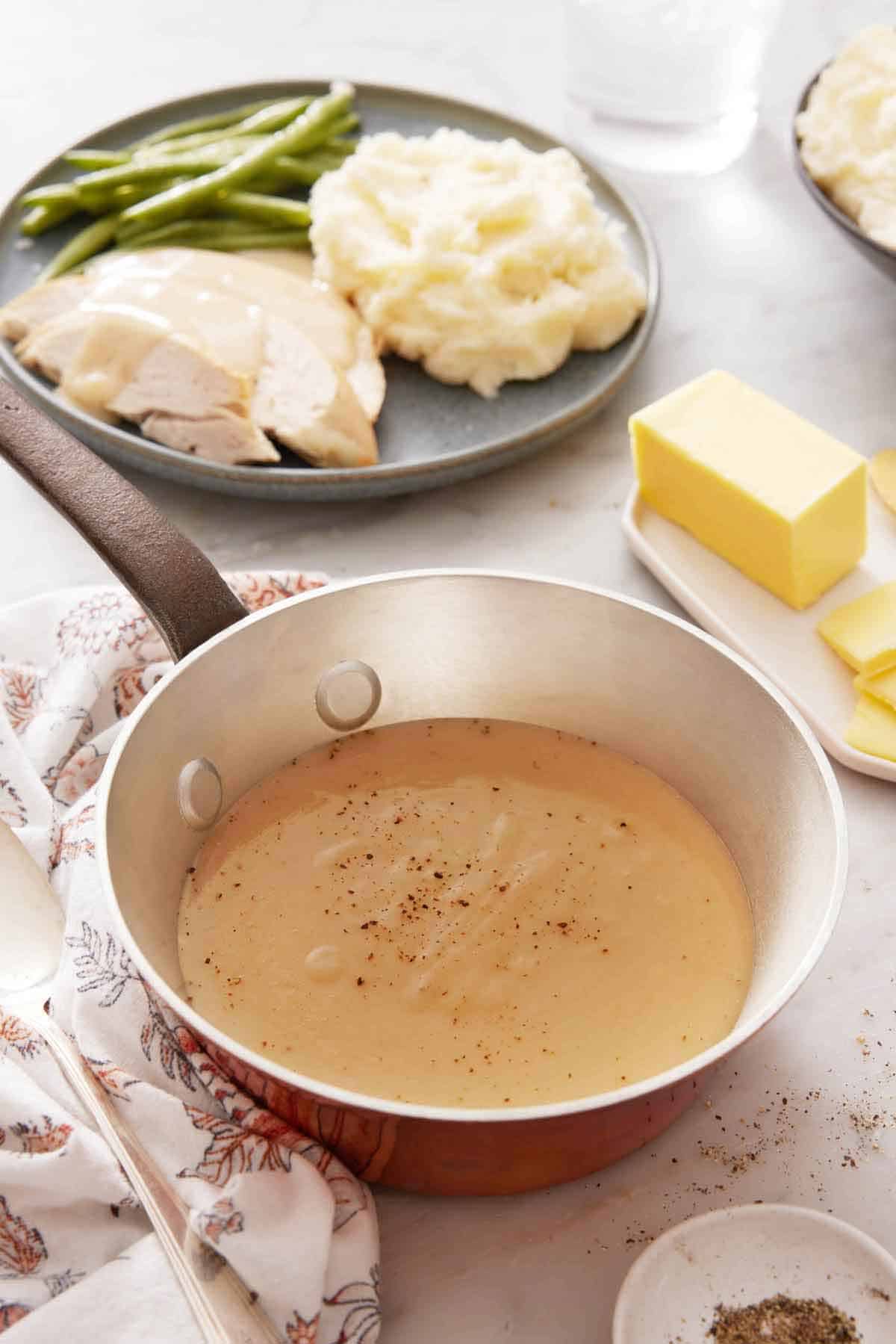
Frequently Asked Questions
Leave out the flour and use cornstarch instead. To do this, reduce the amount of butter to 4 tablespoons. Melt it in the pan as directed, then add the broth and bring it to a simmer. Mix ⅓ cup cornstarch with ½ cup of room temperature broth or water to make a cornstarch slurry, whisk it into the saucepan, and simmer while stirring until thickened to your liking.
Yes, you can swap all or some of the butter with fat from the pan drippings.
Once it cools completely, transfer the gravy to an airtight container and refrigerate for up to 4 days. Gravy does not freeze well, as it can lose its silky texture once defrosted, so I don’t recommend it.
Add the gravy to a saucepan over low to medium-low heat and stir frequently until hot and pourable again. It will be very thick when cold from the refrigerator and appears to “melt” as it is reheated. If it stays too thick once hot, add more broth to thin it out.
If you’ve tried this gravy recipe, then don’t forget to rate it and let me know how you got on in the comments below. I love hearing from you!
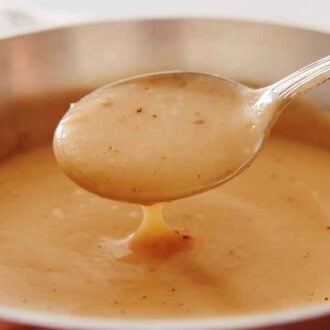
Gravy Recipe
Equipment
- Saucepan
Ingredients
- 6 tablespoons unsalted butter (85g)
- ½ cup all-purpose flour (60g)
- 3 cups warm broth (or pan drippings) (720mL)
- ¾ teaspoon onion powder
- Salt to taste
- Ground black pepper to taste
Instructions
- In a medium saucepan over medium heat, melt the butter. Whisk in the flour, and cook, stirring constantly, until the flour turns golden brown, about 4 minutes.
- While whisking, slowly pour in the broth and whisk until smooth. Stir in the onion powder. Reduce the heat to medium-low.
- Simmer, stirring frequently, for about 6 minutes, until the gravy thickens enough to coat the back of a spoon. Add salt and pepper to taste. Serve immediately or keep warm until ready to serve.
Notes
- Strain the gravy for a silky smooth texture: I like to strain my gravy after it has thickened to catch any potential lumps of flour that didn’t incorporate or little pieces of herb or meat from the drippings. This is totally optional, though!
- For a white gravy, substitute whole milk for the broth. Perfect for serving with my buttermilk biscuits recipe and even more delicious with the addition of browned ground sausage for the perfect biscuits and gravy.
- Add salt and pepper at the end. Finish the gravy with salt and black pepper to taste and additional onion powder if desired. Especially when using pan drippings, it is important to taste it before adding salt or pepper because the flavor of the drippings will vary depending on the seasonings used on the meat.
- Use other fats for the roux. Unsalted butter is an easy way to make a roux for gravy, but you can certainly use other fats like the fat skimmed off of the drippings, duck fat, or dairy-free butter.



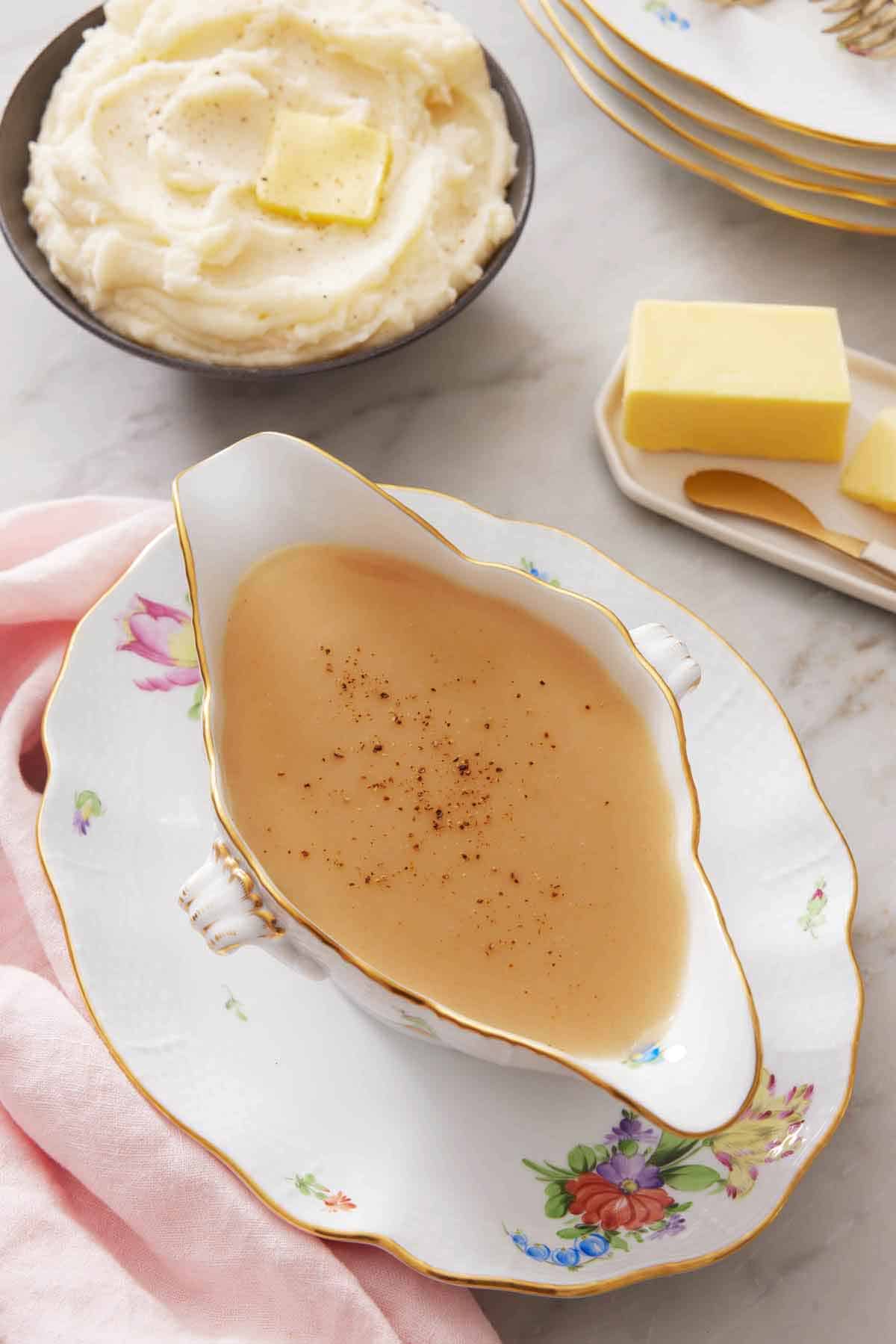
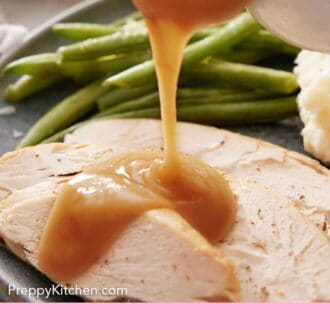

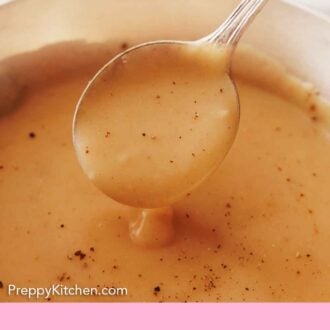

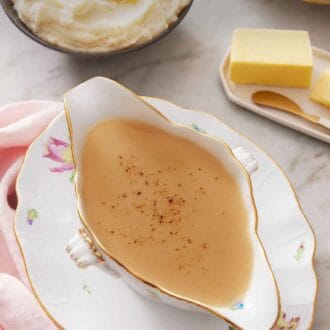

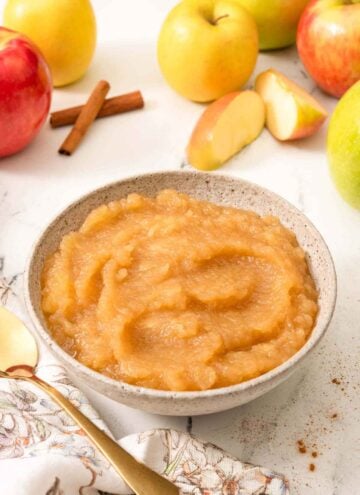
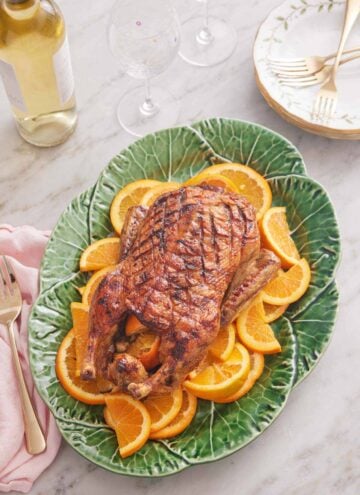



Leave a Reply